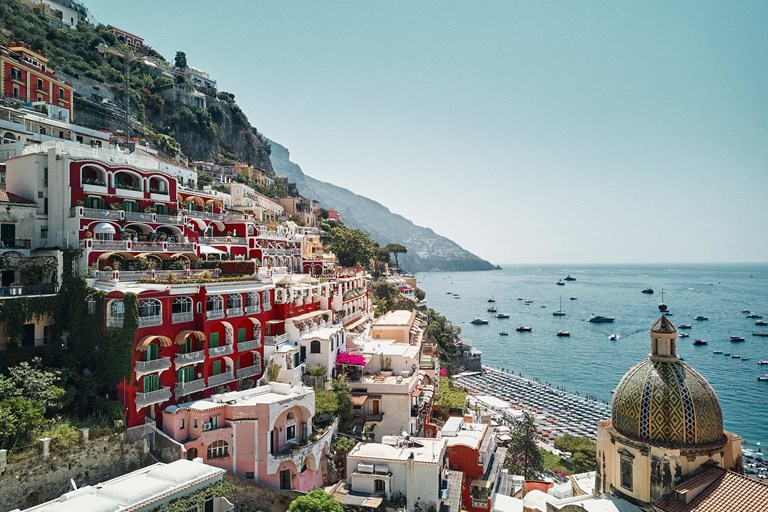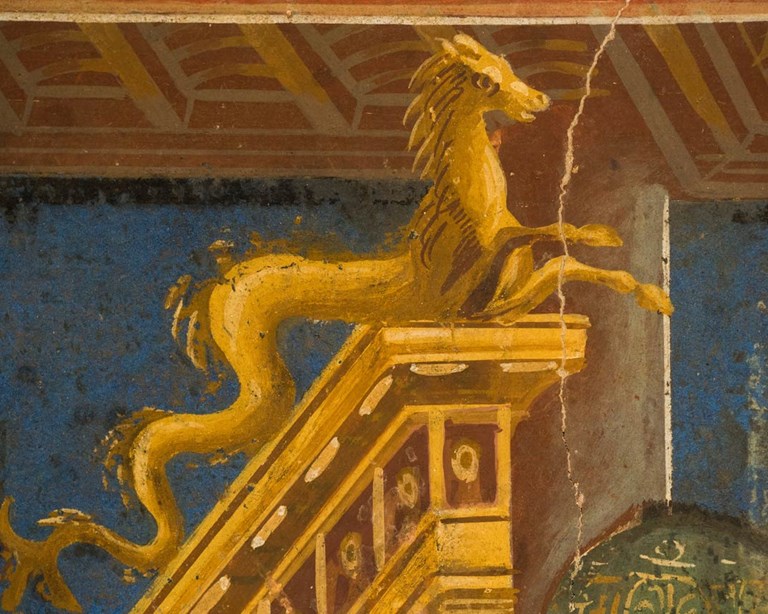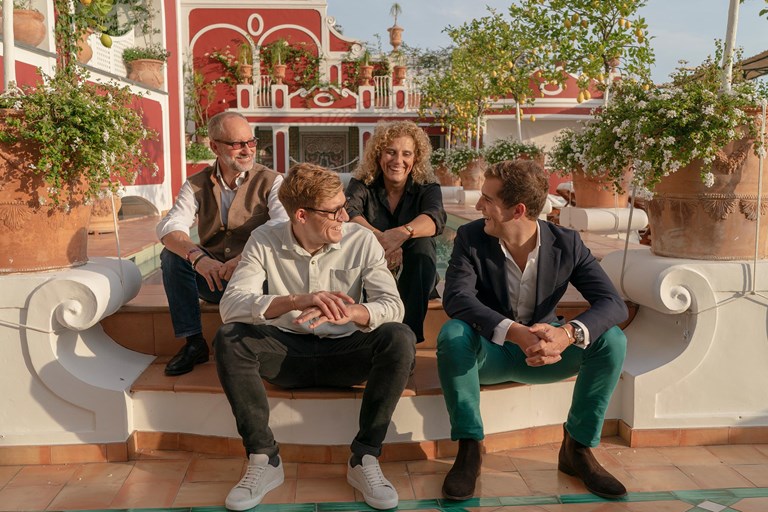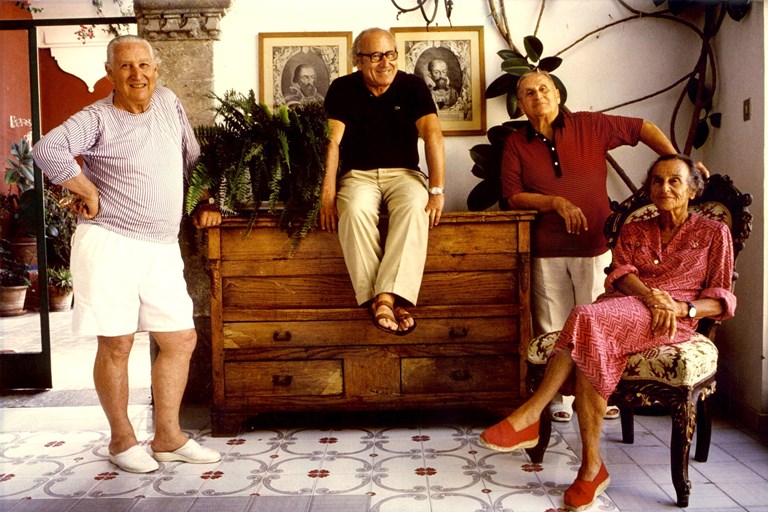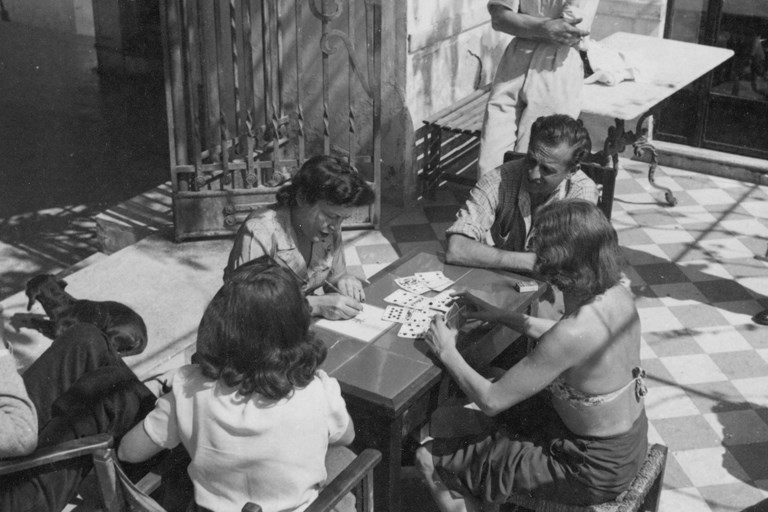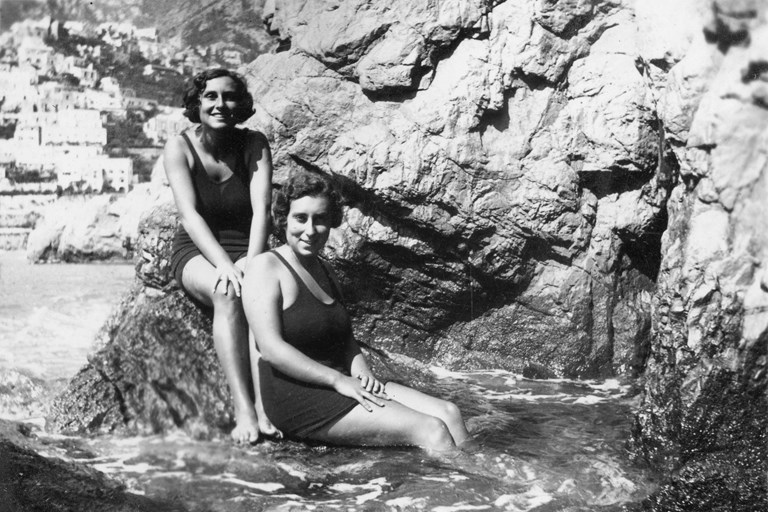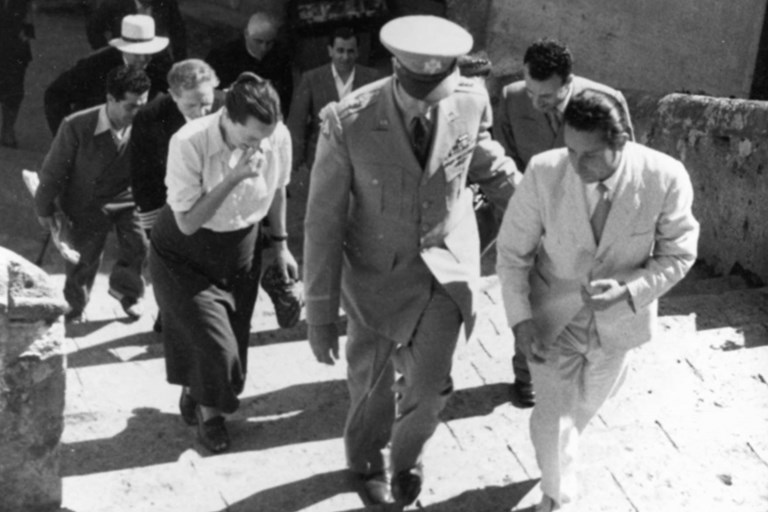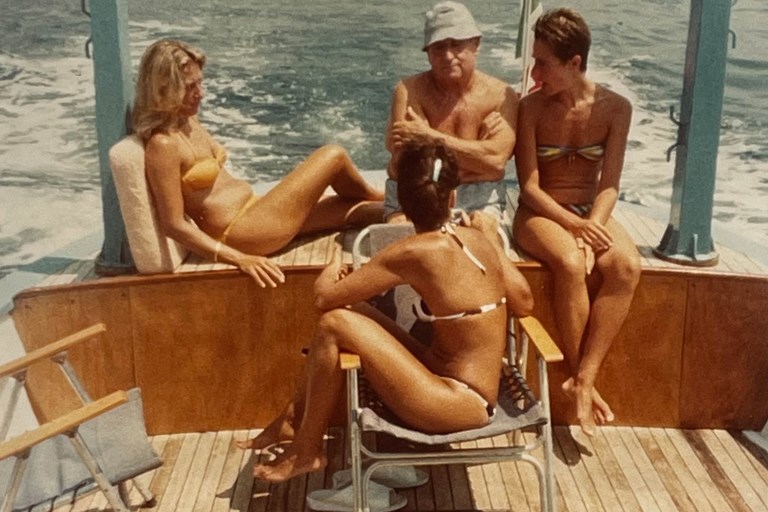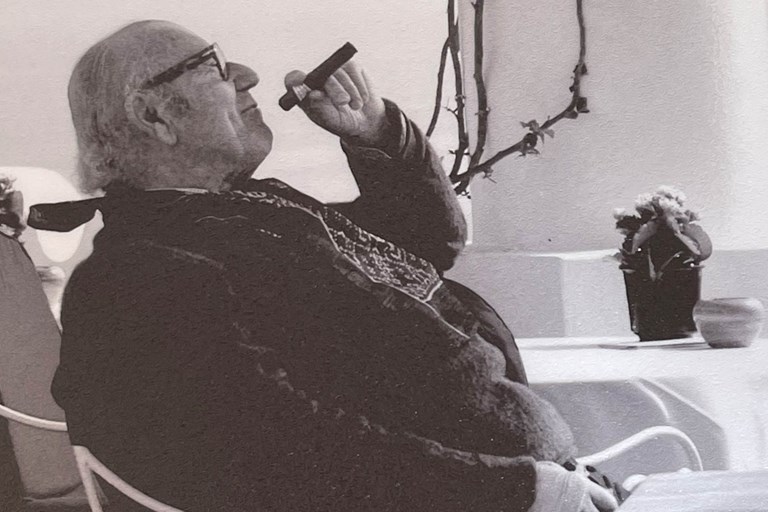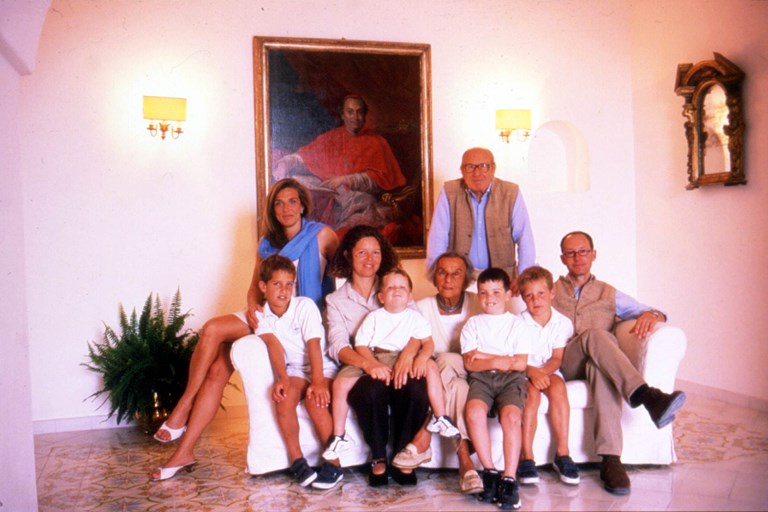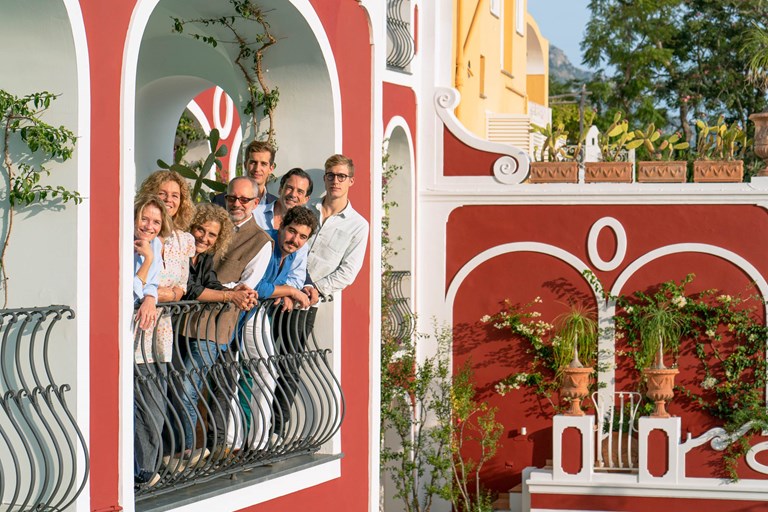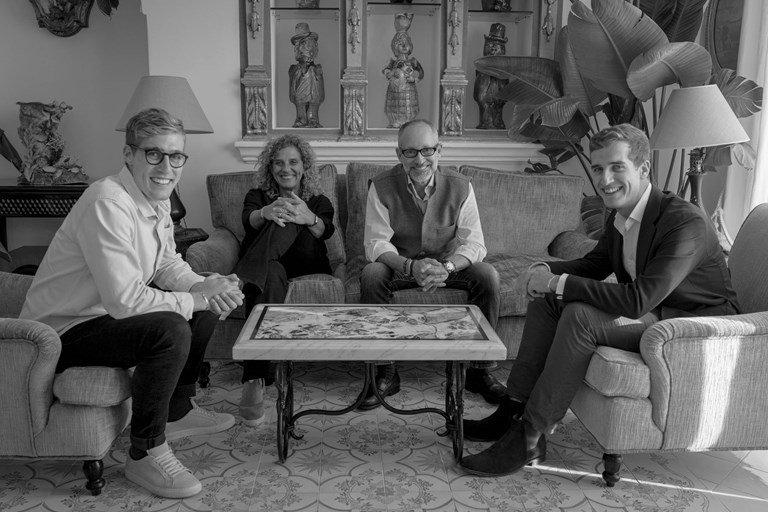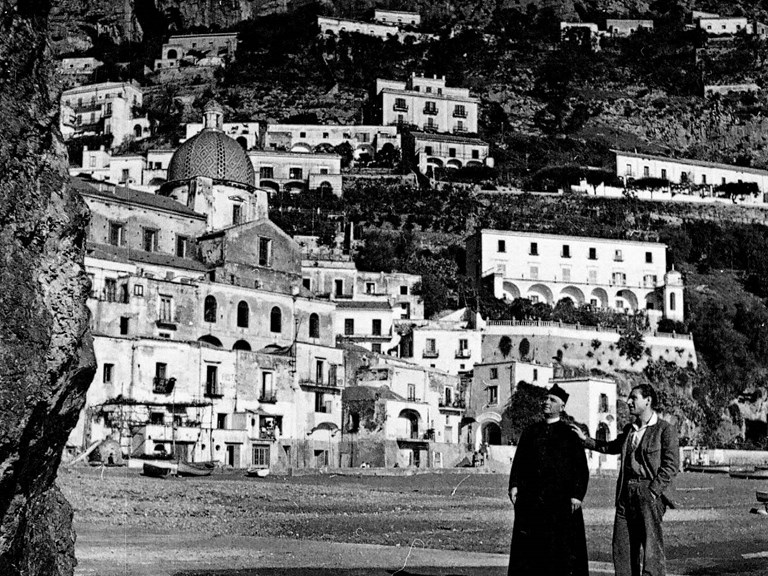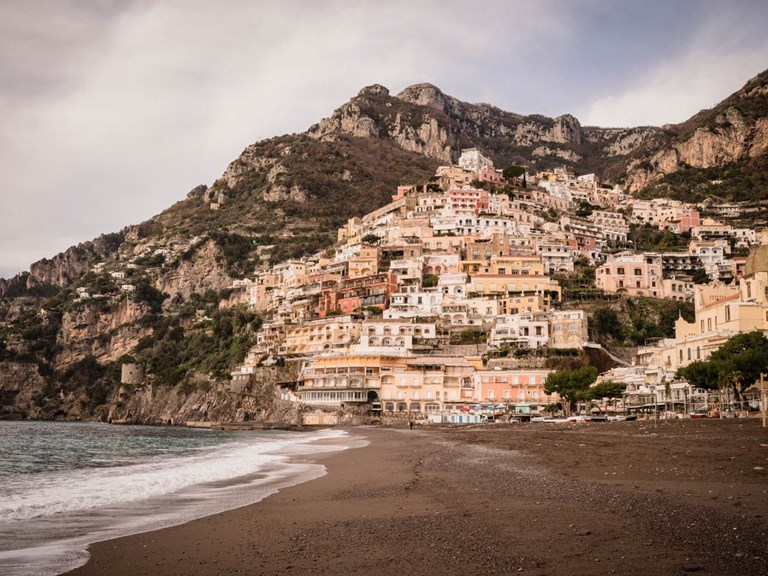Falling in love with Positano
A place, a family, a passion
Ever since the early Middle Ages, positanesi have been travellers, crossing seas and oceans, making contacts. But we carry our small ‘vertical’ town with us wherever we go. The azure Mediterranean in front, the mountains behind, a stack of jaunty houses, bougainvillea and lemon trees: even on a busy New York sidewalk, this picture floats somewhere in the middle distance, like a film projected on mist.
“We carry our small ‘vertical’ town with us wherever we go.”
Flat landcapes and straight roads feel wrong to us. We come from a land where there are only two directions, up and down, and where routes never go direct from A to B but meander from A towards Z before eventually ending up at H, or Q, or X.
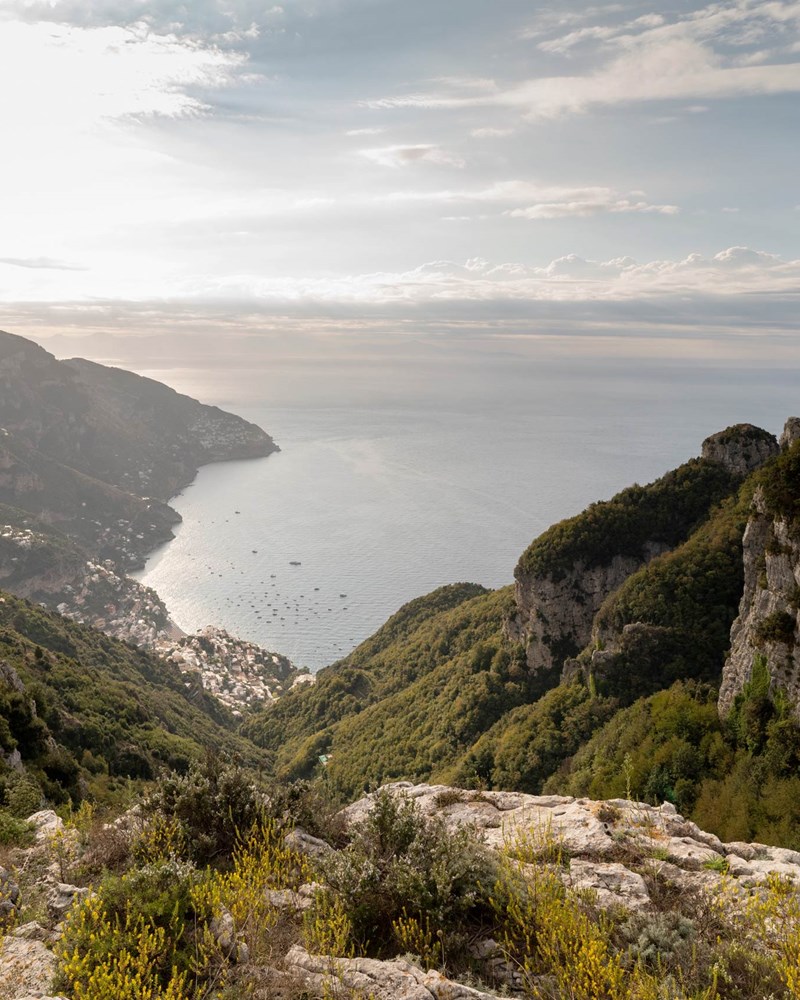
The history of Positano is a story of survival against the odds, vital maritime energy, and a natural instinct for hospitality. But it is also a wandering line. The vivid murals of the Roman villa that recently came to light under the mother church of Santa Maria Assunta, the beautiful, mysterious Byzantine Madonna on the high altar of the church itself, the handsome 18th-century merchants’ houses of the Liparlati district, the northern and eastern European artists and writers who created a small but vibrant cultural community here in the early twentieth century – these dazzling pinnacles emerge from the past with no clear path between them, because so little was written down.
“In 1951, we opened our home to the world.”
When our family discovered it between the two World Wars, Positano was a delightful seaside refuge from Naples’ summer heat and intense urban life. At first, it was where we spent the summer and the occasional weekend. But we still felt deeply at home here. Positano and Naples share traditions, saints, recipes, dialect expressions and the wayfaring ways we inherited from our common ancestors.
Before long, siblings Anna, Aldo, Paolo and Franco Sersale found that they were spending more time at Villa Giulietta in Positano than in Naples itself. In 1944, Paolo was even elected mayor of Positano – a mandate that would be reconfirmed three more times, until 1960. In the first year of his mayorship, he persuaded US General Mark Clark to designate Positano as an army rest resort, and the family personally hosted several Allied officers.
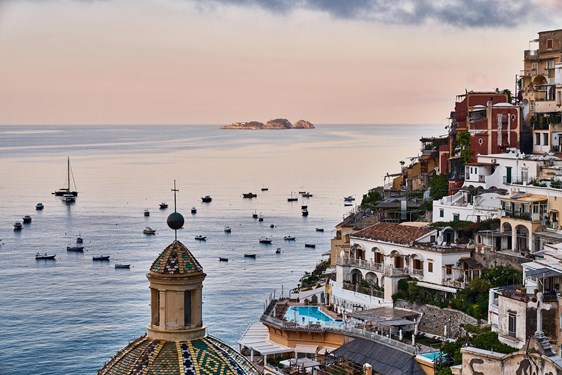
View
Looking after guests, introducing them to the things locals love to eat and drink, telling them our stories and listening to their own – these were natural extensions of the hospitality the family villa had always offered to friends and guests. So when Villa Giulietta opened as a hotel called Le Sirenuse in 1951, it didn’t feel like such a big leap. It still doesn’t. Though we no longer live inside the house that became Le Sirenuse, we have never lost the sense that this is our home and that those who visit us here are our honoured guests. We hope we never do.
